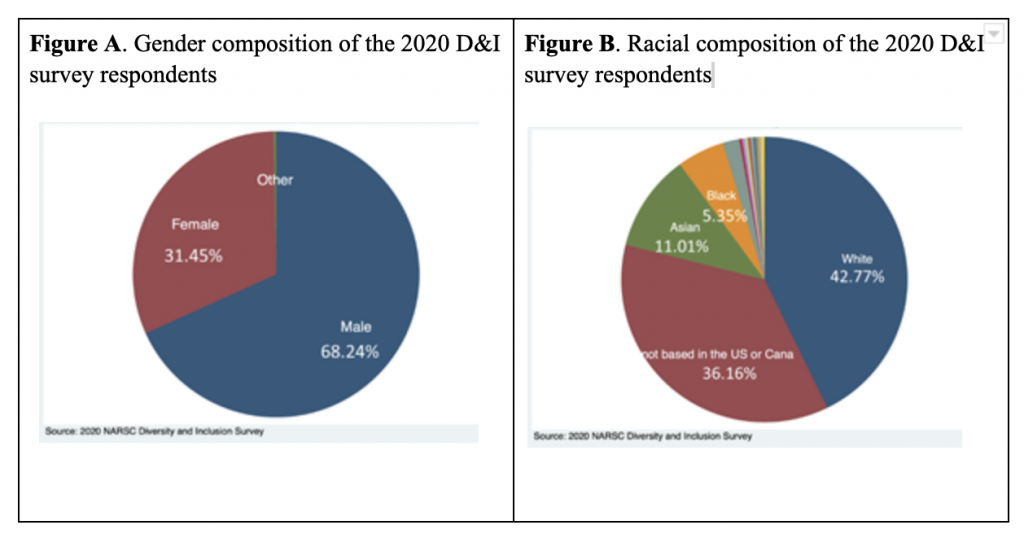Mission Statement
The NARSC Diversity and Inclusion Committee is committed to fostering an environment that embraces diversity, equity and inclusion in pursuing excellence in the field of regional science. The NARSC organization is composed of faculty, students, and professionals from a wide range of racial and ethnic identities, gender expressions, ages, nationalities, political perspectives, and socio-economic backgrounds. The Diversity and Inclusion Committee supports practices that promote inclusion and equality of opportunity for all.
- Co-Chair: DALL’ERBA, Sandy (University of Illinois Urbana-Champaign)
- Co-Chair: TONG, Daoqin (Arizona State University)
- NARSC Representative: MANSURY, Yuri (Illinois Institute of Technology)
- LOW, Sarah (University of Missouri)
- PATRICK, Carlianne (Georgia State University)
- BARDAKA, Eleni (North Carolina State University)
- DELGADO, Michael (Purdue University)
- XU, Yilan (University of Illinois Urbana-Champaign).
History
The NARSC Council unanimously approved the creation of the NARSC Diversity Committee in February 2020. The name was subsequently expanded to the Diversity and Inclusion Committee, reflecting the commitment to increasing the participation of populations that have been historically under-represented in the Regional Science community.
What the committee has done: The diversity survey
An online survey was distributed in 2020 to a broad cross section of the Regional Science community to collect demographic data, including respondent occupation, home department, gender, age, race, ethnicity, and geography of residence. The survey also tracked respondent conference activities, measured by turnouts at regional science meetings and board meetings attended during conferences. Academic recognitions are measured by number of peer-reviewed publications, keynote presentations, awards received, and journal editorial boards served. Of particular interest are responses to questions that were posed as open ended. Specifically, “What do you think is the biggest diversity challenge currently faced by NARSC?” and the follow up “What do you think would be the solution(s) to the challenge you indicated above?”
The results found that about one-third of the total 395 respondents who completed the survey were female (see Figure A). 27 percent of respondents were 35-44 years old, followed by one-fifth each in the 45-54 and 26-45 age group, respectively. The racial composition of North American residents was 67 percent White, 17 percent Asian, and 8 percent Black (see also Figure B, which includes respondents from outside North America). At the same time, about 14 percent of North American residents identified as Hispanic/Latino. In terms of disciplinary background, economics was cited by 45 percent of respondents, followed by geography (12 percent), applied/agricultural economics (10 percent), planning (7 percent), and public policy (5 percent). Nearly 30 percent of all respondents were full professors, followed by associate professors, assistant professors, graduate students, and government employees at 20 percent, 13 percent, 12 percent, and 7 percent, respectively.

The preliminary analyses of the survey were presented at the 2020 virtual meetings of the Regional Science Association International on a November 9th session, titled Diversity and Inclusion at NARSC: Survey Results.[1]
What’s next
The NARSC is a growing association with an outstanding core of supporters in the Regional Science community. The Diversity and Inclusion Committee seeks to increase the NARSC’s capacity to offer a collegiate environment that welcomes and supports all voices. Going forward, the committee solicits feedback and suggestions on the proposed solutions to the challenges identified in the survey. This is in parallel to the preparation of a draft of the analysis and recommendation report, in coordination with the NARSC Young Scholar Committee. We expect NARSC to learn from other Regional Science associations and other organizations in stepping up its Diversity and Inclusion efforts. It’s a long-term team effort.
[1] The session’s video recording is available on YouTube at https://www.bing.com/videos/search?q=narsc+youtube&docid=608001420237040721&mid=9E48AD668A1919B08D109E48AD668A1919B08D10&view=detail&FORM=VIRE
